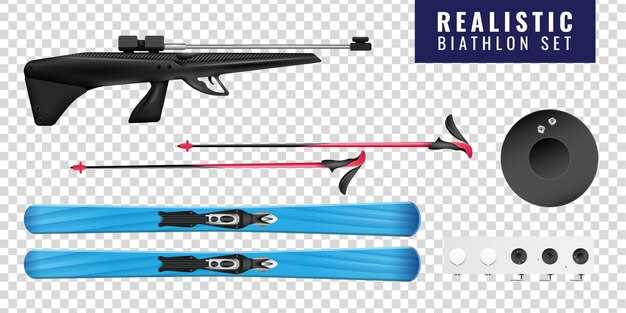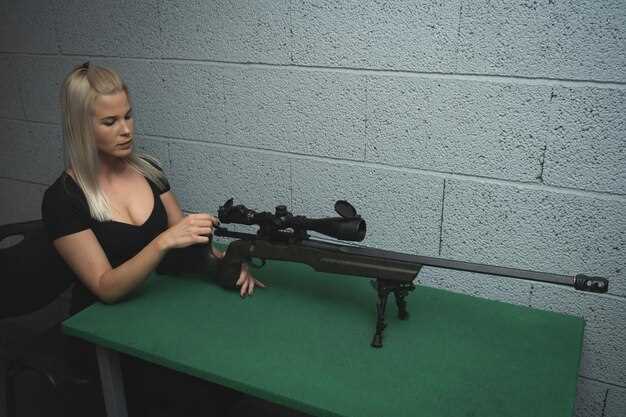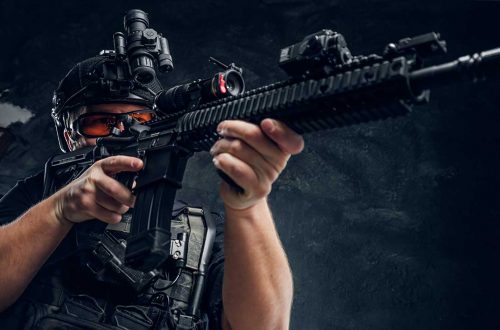
Scope mounting guide for rifles and crossbows

When it comes to enhancing your shooting accuracy, a properly mounted scope is essential for both rifles and crossbows. Understanding the principles of scope mounting can significantly improve your shooting performance and ensure that you’re hitting your target every time. This guide will cover the fundamental aspects of scope mounting, focusing on various techniques and considerations that can help you achieve optimal results.
First and foremost, achieving a stable and secure mount is critical for maintaining accuracy in your shots. A well-mounted scope allows for consistent eye relief and alignment, reducing the chances of misfires or adjustments needed during hunting or target practice. In this guide, we will explore the different types of mounts available, from ring mounts to quick-release systems, each offering unique advantages for both rifles and crossbows.
Furthermore, proper alignment and leveling of your scope are crucial steps in the mounting process. Any misalignment can lead to frustrating shooting experiences and a diminished ability to accurately zero in on targets. We will delve into techniques that ensure your scope is perfectly leveled and aligned, allowing for precise adjustments and improved shooting confidence. Whether you’re a seasoned marksman or a novice, mastering the art of scope mounting will elevate your shooting capabilities to new heights.
Choosing the Right Mount for Your Scope
Selecting the appropriate mount for your rifle or crossbow scope is crucial for achieving optimal accuracy and alignment. The right mounting system ensures that your scope remains securely fixed, allowing for precise adjustments and enhanced performance. Below are key factors to consider when choosing a mount:
- Compatibility: Ensure the mount is compatible with both your scope and firearm. Check the mounting style, such as weaver, picatinny, or dovetail, and match it accordingly.
- Height: The height of the mount affects your shooting position and eye relief. Choose a height that allows for a natural sight alignment while aiming.
- Material: Mounts can be made from various materials including aluminum or steel. Aluminum is lightweight, while steel offers durability. Select based on your specific needs and preferences.
- Type of Mount: Decide between one-piece mounts or two-piece mounts. One-piece mounts provide stability and are easier to align, while two-piece mounts offer flexibility in height adjustments.
- Return to Zero: Look for mounts that maintain a return-to-zero capability. This ensures that upon removing and reattaching the scope, your settings stay consistent.
- Installation Ease: Opt for a mount that’s simple to install. A complicated setup can lead to improper alignment and affect your overall shooting experience.
In summary, the right mount plays a significant role in the mounting process of your scope. Prioritize compatibility, height, material, type, return-to-zero capability, and ease of installation to ensure a successful alignment and enhance your shooting accuracy.
Step-by-Step Alignment Techniques for Accurate Shooting

Achieving precise alignment of your scope during the mounting process is crucial for accurate shooting. Follow these steps to ensure your scope is aligned correctly with your rifle or crossbow.
Start by securely mounting the scope onto the rifle or crossbow using quality rings and bases. Ensure that all screws are tightened but not overly aggressive, as this could damage the mounting hardware.
Once the scope is mounted, use a bore sighting tool to align the scope with the rifle bore. Insert the bore sight tool into the muzzle and look through the scope. Adjust the scope’s windage and elevation settings until the crosshairs are centered on the bore sight’s dot.
Next, take the rifle to a shooting range where you can fire at a target at a predetermined distance, typically 25 yards for initial sighting. Fire a three-shot group and note where the shots land in relation to the target’s center. This will help you evaluate the alignment of your scope.
If the shots are off-center, use the adjustments on the scope to realign it. Move the crosshairs according to the impact of your group – for example, if shots hit low, adjust the elevation knob upward.
Repeat the shooting and adjusting process, making incremental changes until your shots consistently hit the target center. Remember to check and record your scope settings after each adjustment for future reference.
Finally, once you have achieved the desired alignment at 25 yards, recalibrate your scope for longer distances, adjusting as necessary. Regularly check the alignment of your scope, especially after transport or any significant bump.
Troubleshooting Common Mounting Issues

When setting up your rifle or crossbow scope, achieving proper mounting and alignment is crucial for optimal accuracy. However, various issues can arise during the process. Here are some common problems and solutions to ensure your scope is mounted correctly.
Issue 1: Loose Mounting
If your scope feels wobbly or shifts during use, this indicates that the mounting screws may not be tightened properly. Check all screws and bolts, ensuring they are snug but not over-tightened, which can strip the threads. Use a torque wrench to achieve the recommended specifications from the manufacturer.
Issue 2: Misalignment with the Bore
A common issue is the scope not being aligned with the rifle’s bore. This misalignment leads to inaccurate shooting. To rectify this, use a bore-sighting tool, aligning the scope’s reticle with the center of the bore. This initial setup will save time during zeroing at the range.
Issue 3: Incorrect Scope Height
The height at which your scope is mounted can affect your shooting position and comfort. If the scope is too high or too low, it may cause strain on your neck or hinder a proper sight picture. Consider adjustable mounts or riser blocks to achieve the optimal height for your setup.
Issue 4: Parallax Errors
Parallax errors occur when the scope reticle and the target are not in the same plane, causing your point of aim to shift as you move your head. To address this, use a scope with adjustable parallax settings, and ensure it is set correctly for the distance you are shooting.
Issue 5: Inconsistent Eye Relief
Having inconsistent eye relief can lead to a poor shooting experience. This is the distance from the scope’s ocular lens to your eye. Adjust your mounting position to achieve a consistent and comfortable eye relief, ensuring you have a full field of view without any blackouts.
By addressing these common mounting and alignment issues, you can ensure a more effective and enjoyable shooting experience. Regularly check your scope alignment and mounting integrity to maintain accuracy and reliability in the field.




